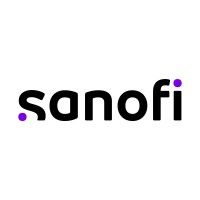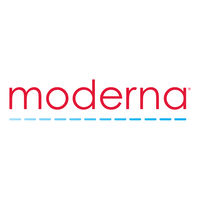预约演示
更新于:2024-09-22
OX40L
更新于:2024-09-22
基本信息
相关靶点 |
关联
17
项与 OX40L 相关的药物靶点 |
作用机制 OX40L抑制剂 |
在研机构 |
原研机构 |
在研适应症 |
非在研适应症 |
最高研发阶段临床2期 |
首次获批国家/地区- |
首次获批日期- |
作用机制 OX40L抑制剂 [+1] |
在研机构 |
原研机构 |
在研适应症 |
非在研适应症- |
最高研发阶段临床2期 |
首次获批国家/地区- |
首次获批日期- |
58
项与 OX40L 相关的临床试验NCT06500702
A Parallel-group Treatment, Phase 2a, Multicenter, Randomized, Double-blind, Placebo-controlled Umbrella Study to Evaluate the Efficacy and Safety of Frexalimab, SAR442970, and Rilzabrutinib in Participants Aged 16 to 75 Years With Primary Focal Segmental Glomerulosclerosis (FSGS) or Minimal Change Disease (MCD)
This is a parallel, Phase 2a, double-blind, 6-arm study for the treatment of primary focal segmental glomerulosclerosis (FSGS) or primary minimal change disease (MCD).
The purpose of this study is to measure the change in proteinuria and its impact on the rates of remission of nephrotic syndrome with frexalimab, SAR442970, or rilzabrutinib compared with placebo in participants with primary FSGS or primary MCD aged 16 to 75 years.
Study details for each participant include:
The study duration will be up to 76 weeks. The treatment duration will be 24 weeks. There will be up to 18 visits.
The purpose of this study is to measure the change in proteinuria and its impact on the rates of remission of nephrotic syndrome with frexalimab, SAR442970, or rilzabrutinib compared with placebo in participants with primary FSGS or primary MCD aged 16 to 75 years.
Study details for each participant include:
The study duration will be up to 76 weeks. The treatment duration will be 24 weeks. There will be up to 18 visits.
开始日期2024-09-04 |
申办/合作机构 |
NCT06557772
A Phase 2a/b, Randomized, Double-blind, Placebo-controlled, Parallel-group Study to Investigate the Efficacy and Safety of Subcutaneous Amlitelimab in Adult Patients With Nonresponsive Celiac Disease as an Adjunct to a Gluten-free Diet
This is a Phase 2a/b, randomized, double-blind, placebo-controlled, parallel-group, 6-arm study to evaluate the efficacy and safety of amlitelimab in adult participants with non-responsive celiac disease (NRCD) who are on a gluten free diet (GFD) with and without simulated inadvertent gluten exposure (SIGE).
The primary purpose of this study is to demonstrate the efficacy of subcutaneous (SC) amlitelimab in male and female participants (aged 18 to 75 years, inclusive) with NRCD. The study will assess the effect of amlitelimab when compared to placebo to improve or attenuate gluten induced changes in the intestinal mucosa as measured by the villous height to crypt depth (Vh:Cd) ratio. The effect of amlitelimab on participant-reported celiac signs and symptoms along with the safety, tolerability, and pharmacokinetics of amlitelimab will also be studied.
Study details include:
The study duration will be up to 48 weeks for participants not entering the long-term extension study (including a 16-week safety follow-up period).
The study duration will be up to 32 weeks for participants who enter the long-term extension study.
The treatment duration will be up to 28 weeks. The number of visits will be up to 10 visits.
The primary purpose of this study is to demonstrate the efficacy of subcutaneous (SC) amlitelimab in male and female participants (aged 18 to 75 years, inclusive) with NRCD. The study will assess the effect of amlitelimab when compared to placebo to improve or attenuate gluten induced changes in the intestinal mucosa as measured by the villous height to crypt depth (Vh:Cd) ratio. The effect of amlitelimab on participant-reported celiac signs and symptoms along with the safety, tolerability, and pharmacokinetics of amlitelimab will also be studied.
Study details include:
The study duration will be up to 48 weeks for participants not entering the long-term extension study (including a 16-week safety follow-up period).
The study duration will be up to 32 weeks for participants who enter the long-term extension study.
The treatment duration will be up to 28 weeks. The number of visits will be up to 10 visits.
开始日期2024-08-29 |
申办/合作机构 |
ACTRN12624000775516
A Phase 1, Randomized, Blinded, Placebo-controlled, Single Ascending Dose, First-in-human Study of the Safety, Tolerability, and Pharmacokinetics of APG990 in Healthy Participants
开始日期2024-08-12 |
申办/合作机构 |
100 项与 OX40L 相关的临床结果
登录后查看更多信息
100 项与 OX40L 相关的转化医学
登录后查看更多信息
0 项与 OX40L 相关的专利(医药)
登录后查看更多信息
1,120
项与 OX40L 相关的文献(医药)2024-09-18·BRITISH JOURNAL OF DERMATOLOGY
The role of OX40 ligand/OX40 axis signalling in atopic dermatitis
Review
作者: Weidinger, Stephan ; Guttman-Yassky, Emma ; Geng, Bob ; Rynkiewicz, Natalie ; Xing, Heming ; Valdecantos, Wendell ; Peakman, Mark ; Croft, Michael ; van Krinks, Cassandra ; Lucchesi, Davide
Lay Summary:
Atopic dermatitis (AD) (also known as atopic eczema) is a common skin disease caused by inflammation, and affects 2–3 of every 10 people worldwide. AD affects people of all ages and can cause a range of symptoms, including dry thickened skin, itchiness, rashes and pain. Despite the recent addition of new targeted treatment options, there is still a need for new treatments for people with moderate-to-severe AD.New drugs are being studied that target two important signalling molecules in the immune system, called OX40 ligand (OX40L) and OX40. OX40L and OX40 bind together to continue the cycle of immune system activation, leading to increasing symptoms of AD. Blocking the OX40L and OX40 interaction may ease or stop symptoms of AD.This review outlines what is currently known about the causes of AD, including the role played by the immune system and specifically the role of OX40L and OX40. We also highlight the development of new treatments that target the OX40L and OX40 interaction to treat AD, and suggest what the future may hold for managing AD.
2024-09-01·Cancer metastasis reviews
OX40/OX40 ligand and its role in precision immune oncology
Review
作者: Pabla, Sarabjot ; DePietro, Paul ; Lee, Suzanna ; Previs, Rebecca A ; Thapa, Bicky ; Nishizaki, Daisuke ; Kato, Shumei ; Miyashita, Hirotaka ; Kurzrock, Razelle ; Conroy, Jeffery M ; Nesline, Mary K
Abstract:
Immune checkpoint inhibitors have changed the treatment landscape for various malignancies; however, their benefit is limited to a subset of patients. The immune machinery includes both mediators of suppression/immune evasion, such as PD-1, PD-L1, CTLA-4, and LAG-3, all of which can be inhibited by specific antibodies, and immune-stimulatory molecules, such as T-cell co-stimulatory receptors that belong to the tumor necrosis factor receptor superfamily (TNFRSF), including OX40 receptor (CD134; TNFRSF4), 4-1BB (CD137; TNFRSF9), and glucocorticoid-induced TNFR-related (GITR) protein (CD357; TNFRSF18). In particular, OX40 and its binding ligand OX40L (CD134L; TNFSF4; CD252) are critical for immunoregulation. When OX40 on activated T cells binds OX40L on antigen-presenting cells, T-cell activation and immune stimulation are initiated via enhanced T-cell survival, proliferation and cytotoxicity, memory T-cell formation, and abrogation of regulatory T cell (Treg) immunosuppressive functions. OX40 agonists are in clinical trials both as monotherapy and in combination with other immunotherapy agents, in particular specific checkpoint inhibitors, for cancer treatment. To date, however, only a minority of patients respond. Transcriptomic profiling reveals that OX40 and OX40L expression vary between and within tumor types, and that only ~ 17% of cancer patients have high OX40 and low OX40L, one of the expression patterns that might be theoretically amenable to OX40 agonist enhancement. Taken together, the data suggest that the OX40/OX40L machinery is a critical part of the immune stimulatory system and that understanding endogenous expression patterns of these molecules and co-existing checkpoints merits further investigation in the context of a precision immunotherapy strategy for cancer therapy.
2024-09-01·CANCER LETTERS
Immune checkpoint reprogramming via sequential nucleic acid delivery strategy optimizes systemic immune responses for gastrointestinal cancer immunotherapy
Article
作者: Li, Danyang ; Xu, Lizhou ; Cai, Nan ; Wu, Qiang ; Zhang, Changhua ; Li, Zhuoyuan ; Zhou, Zhijun ; Zhu, Wei-Guo ; Liu, Xinran ; Wei, Zhewei ; Huang, Huaping
Monoclonal antibodies targeting immune checkpoints have been widely applied in gastrointestinal cancer immunotherapy. However, systemic administration of various monoclonal antibodies does not often result in sustained effects in reversing the immunosuppressive tumor microenvironment (TME), which may be due to the spatiotemporal dynamic changes of immune checkpoints. Herein, we reported a novel immune checkpoint reprogramming strategy for gastrointestinal cancer immunotherapy. It was achieved by the sequential delivery of siPD-L1 (siRNA for programmed cell death ligand 1) and pOX40L (plasmid for OX40 ligand), which were complexed with two cationic polymer brush-grafted carbon nanotubes (dense short (DS) and dense long (DL)) designed based on the structural characteristics of nucleic acids and brush architectures. Upon administrating DL/pOX40L for the first three dosages, then followed by DS/siPD-L1 for the next three dosages to the TME, it upregulated the stimulatory checkpoint OX40L on dendritic cells (DCs) and downregulated inhibitory checkpoint PD-L1 on tumor cells and DCs in a sequential reprogramming manner. Compared with other combination treatments, this sequential strategy drastically boosted the DCs maturation, and CD8+ cytotoxic T lymphocytes infiltration in tumor site. Furthermore, it could augment the local antitumor response and improve the T cell infiltration in tumor-draining lymph nodes to reverse the peripheral immunosuppression. Our study demonstrated that sequential nucleic acid delivery strategy via personalized nanoplatforms effectively reversed the immunosuppression status in both tumor microenvironment and peripheral immune landscape, which significantly enhanced the systemic antitumor immune responses and established an optimal immunotherapy strategy against gastrointestinal cancer.
189
项与 OX40L 相关的新闻(医药)2024-09-21
点击蓝字
关注我们
本周,热点不少。首先是审评审批方面,很值得关注的有两个,一个是达格列净二甲双胍缓释片首仿在中国获批上市,另一个是恒瑞医药一线治疗胃癌的1类新药申报上市;其次是研发方面,多个药取得重要进展,非常值得一说的是,恒瑞帕金森病新药启动Ⅲ期临床以及迪哲医药公布舒沃替尼最新肺癌研究数据,超92%患者靶病灶缩小;最后是交易及投融资方面,欧加农12亿美元收购Dermavant,获得本维莫德乳膏权益。
本周盘点包括审评审批、研发、交易及投融资三大板块,统计时间为9.16-9.20,包含27条信息。
审评审批
NMPA
上市
批准
1、9月18日,NMPA官网显示,宣泰医药的达格列净二甲双胍缓释片获批上市,这是该品种国内首家获批的仿制药。达格列净二甲双胍缓释片是一种SGLT2抑制剂,原研由阿斯利康开发,于2023年6月在国内获批上市,用于治疗2型糖尿病。目前,国内多家药企的该品种仿制药已进入申报上市阶段,包括正大天晴、齐鲁制药、华海药业、石家庄四药及南京方生和等。
申请
2、9月18日,CDE官网显示,奥默医药和仙琚制药联合开发的1类新药奥美克松钠注射液申报上市,预测用于治疗拮抗中度肌松和深度肌松。奥美克松钠(Aom0498)是其自主研发的新一代靶向肌松拮抗剂。
3、9月19日,CDE官网显示,恒瑞医药1类新药瑞拉芙普-α注射液(SHR-1701)申报上市,联合氟尿嘧啶类和铂类药物用于局部晚期不可切除、复发或转移性胃及胃食管结合部腺癌的一线治疗。SHR-1701是恒瑞医药自主研发并具有知识产权的抗PD-L1/TGF-βRII双功能融合蛋白,经查询,国内外尚无同类产品获批上市。
4、9月20日,CDE官网显示,EyePoint Pharmaceuticals、欧康维视(Ocumension)等联合开发的地塞米松植入剂(商品名:DEXYCU、OT-502)申报上市。OT-502是一种新型、可生物降解的缓释抗炎药物,旨在为眼科医生提供一种术毕单次注射缓释激素的选择。
临床
批准
5、9月18日,CDE官网显示,普方生物1类新药注射用PRO1286获批临床,拟用于治疗实体瘤患者。这是一款在研的EGFR与cMET靶向双特异性抗体偶联药物(ADC),2024年5月,Genmab公司已经完成对普方生物的收购,收购金额为18亿美元。
6、9月18日,CDE官网显示,恒瑞医药1类新药SHR-1905注射液获批临床,拟开发用于12-17周岁的青少年哮喘患者。SHR-1905为恒瑞医药研发的TSLP单克隆抗体,此前恒瑞与OneBio公司达成一项高达10.5亿美元的合作,将该产品在大中华区以外的全球范围内开发、生产和商业化独家权利授予OneBio公司。
7、9月18日,CDE官网显示,和记黄埔医药1类新药HMPL-760胶囊获批临床,适应症为联合R-GemOx(利妥昔单抗+吉西他滨+奥沙利铂)治疗复发/难治弥漫大B细胞淋巴瘤(R/RDLBCL)。HMPL-760是一款第三代非共价BTK抑制剂。
8、9月18日,CDE官网显示,上海医药1类新药SPH4336片获批临床,联合奥希替尼治疗KRAS突变型晚期实体瘤。SPH4336是一种新型高选择性口服抑制剂,具有广谱的抗肿瘤作用。该产品对CDK4/6靶点具有较高的选择性,同时具有广谱抗Rb阳性肿瘤活性。
9、9月18日,CDE官网显示,挚盟医药1类新药CB03-154片获批临床,拟开发治疗成人肌萎缩侧索硬化(又称“渐冻症”,ALS)。CB03-154片是一款KCNQ2/3选择性开放剂。该产品此前治疗ALS适应症已经获得美国FDA授予孤儿药资格。
10、9月19日,CDE官网显示,贝达药业的CFT8919胶囊获批临床,拟开发用于携带EGFR突变的非小细胞肺癌患者。这是贝达药业与C4Therapeutics合作开发的一种具有口服生物利用度的变构BiDAC™(双功能蛋白)降解剂。
11、9月19日,CDE官网显示,强生(Johnson&Johnson)1类新药bleximenib胶囊获批临床,拟用于治疗携带组蛋白-赖氨酸N-甲基转移酶2A重排(KMT2Ar)或核磷蛋白1基因突变(NPM1m)的复发/难治性急性髓系白血病(AML)成人患者。bleximenib是一款Menin-KMT2A相互作用抑制剂,正在国际范围内开展Ⅰ/Ⅱ期临床研究。
12、9月20日,CDE官网显示,百济神州1类新药注射用BGB-C354获批临床,拟开发治疗晚期实体瘤患者。BGB-C354是一款靶向B7-H3的抗体偶联药物(ADC),是百济神州在实体瘤领域布局的一款新分子实体,本次为该产品首次在中国获批临床。
优先审评
13、9月19日,CDE官网显示,乐普生物的注射用维贝柯妥塔单抗(MRG003)拟纳入优先审评,用于治疗既往经至少二线系统化疗和PD-1/PD-L1抑制剂治疗失败的复发或转移性鼻咽癌(NPC)患者。该药物是进度最快的国产EGFR ADC。
FDA
上市
批准
14、9月17日,FDA官网显示,默沙东的PD-1单抗帕博利珠单抗(商品名:Keytruda、K药)获批新适应症,用于联合培美曲塞和铂类化疗一线治疗不可切除的晚期或转移性恶性胸膜间皮瘤(MPM)。目前,全球仅3款创新疗法获批用于治疗MPM,包括纳武利尤单抗(BMS/小野制药)、TTFields(Novocure/再鼎医药)和K药。
15、9月17日,FDA官网显示,诺华的CDK4/6抑制剂瑞波西利与芳香化酶抑制剂(AI)获批,联合用于激素受体阳性/人类表皮生长因子受体2阴性(HR+/HER2-)的Ⅱ期和Ⅲ期早期乳腺癌(EBC)高复发风险患者(包括淋巴结阴性N0患者)的辅助治疗;广泛适用于复发风险较高的HR+/HER2-Ⅱ期和Ⅲ期EBC,将符合CDK4/6抑制剂辅助治疗条件的人群增加了约一倍。
16、9月18日,FDA官网显示,阿斯利康的贝那利珠单抗(Benralizumab、商品名:Fasenra)获批新适应症,用于治疗嗜酸性肉芽肿性多血管炎(EGPA)。贝那利珠单抗是一款抗IL-5受体(IL-5Rα)单抗,2017年11月,首次在美国获批上市,用于12岁及以上的重度嗜酸性粒细胞性哮喘(SEA)患者的附加维持治疗。2019年10月,预填充一次性自动注射笔获批,至此以后患者可自行注射用药。
17、9月18日,FDA官网显示,再生元和赛诺菲的度普利尤单抗(商品名:Dupixent)递交补充生物制品许可申请(sBLA),用于治疗慢性鼻-鼻窦炎伴鼻息肉(CRSwNP)青少年患者。度普利尤单抗是再生元和赛诺菲合作开发的一款抗IL-4Rα全人源单抗,成为了美国第一种针对12-17岁青少年CRSwNP患者的疗法。
研发
临床状态
18、9月18日,中国药物临床试验登记与信息公示平台官网显示,赛诺菲(Sanofi)启动了amlitelimab注射液的一项新的国际多中心(含中国)Ⅲ期临床研究,旨在评估该产品针对12岁及以上中重度特应性皮炎患者的疗效和安全性。Amlitelimab是一种皮下注射的完全人源化、非耗竭性单克隆抗体,它能与OX40L结合,旨在恢复促炎及调节性T细胞之间的免疫稳态。
19、9月18日,中国药物临床试验登记与信息公示平台官网显示,石药集团启动一项多中心、随机、开放、阳性对照Ⅲ期临床试验,比较其司美格鲁肽注射液和原研药治疗肥胖患者的有效性和安全性。这是国内第四款启动肥胖Ⅲ期临床的司美格鲁肽。
20、9月19日,Clinicaltrials官网显示,恒瑞登记了一项HRG2010治疗帕金森病的Ⅲ期临床(NCT06598735)。HRG2010胶囊是恒瑞自主研发的卡比多巴+左旋多巴新型复方缓释胶囊,以卡比多巴-左旋多巴缓释片为对照,主要终点指标为第21周「停药」时间与基线相比的变化。目前国内外已上市的同类产品主要包括多巴丝肼片(商品名:美多芭)、恩他卡朋双多巴片(商品名:达灵复)和卡左双多巴缓释片(商品名:息宁)。
21、9月19日,药物临床试验登记与信息公示平台显示,艾伯维登记了一项评估Epcoritamab+利妥昔单抗和来那度胺对比化学免疫疗法在既往未接受过治疗的滤泡性淋巴瘤受试者中的Ⅲ期临床试验。Epcoritamab是全球第3款获批的CD20×CD3双抗。
临床数据
22、9月17日,默沙东和第一三共公布了patritumab deruxtecan治疗既往接受过EGFR-TKI治疗的局部晚期或转移性EGFR突变NSCLC患者的Ⅲ期HERTHENA-Lung02研究达到了PFS的主要终点。与铂联合培美曲塞诱导化疗后再接受培美曲塞维持化疗相比,该药治疗后患者实现显著的PFS统计学改善。该药是一款采用第一三共技术设计的潜在first-in-class靶向HER3的DXd抗体偶联药物(ADC)。
23、9月17日,迪哲医药公布了高选择性EGFR酪氨酸激酶抑制剂舒沃替尼片(商品名:舒沃哲)国际多中心注册临床研究“悟空1B”(WU-KONG1PartB、WU-KONG1B)临床数据。研究显示,舒沃替尼二/后线治疗EGFR20号外显子插入突变(exon20ins)非小细胞肺癌(NSCLC)各亚组获益与全球整体人群一致。2023年8月,该药在中国获批上市。
24、9月18日,阿斯利康(AstraZeneca)公布了第三代EGFR-TKI奥希替尼治疗Ⅲ期不可切除的EGFR突变非小细胞肺癌的临床(LAURA)结果,与安慰剂相比,奥希替尼将CNS进展或死亡风险降低了83%。此外,奥希替尼治疗的中位至远处转移时间(TTDM)也显示出具有临床意义的改善,12个月时接受奥希替尼治疗组患者TTDM累计发生率为11%,而接受安慰剂组治疗患者为37%。2024年6月,奥希替尼递交了该适应症的上市申请。
25、9月18日,和誉医药公布了小分子FGFR4抑制剂依帕戈替尼(ABSK011)在Ⅰ期临床试验中针对FGF19过表达的晚期肝细胞癌的临床数据。依帕戈替尼220mgBID组在经免疫检查点抑制剂(ICIs)和多靶点小分子酪氨酸激酶抑制剂(mTKIs)治疗的FGF19过表达肝细胞癌患者中展现出优异的有效性,其总体缓解率(ORR)达到44.8%,中位缓解持续时间(mDOR)为7.4个月,中位无进展生存期(mPFS)达到5.5个月。
26、9月19日,Aligos公布了甲状腺激素受体β(THR-β)激动剂ALG-055009在代谢功能障碍相关脂肪性肝炎(MASH)患者中的Ⅱa期HERALD研究的积极顶线结果。第12周,肝脏脂肪相对减少中位数高达46.2%,且剂量反应明显。
交易及投融资
27、9月18日,欧加农(Organon)宣布,将收购Roivant子公司Dermavant Sciences。该交易预计将于2024年Q4完成。欧加农预计该交易不会导致其资本配置的优先级发生变化。根据协议条款,收购总交易额约为12亿美元,包括1.75亿美元的首付款、7500万美元的监管里程碑付款以及9.5亿美元的某些商业里程碑付款。
END
【智药研习社直播预告】
来源:CPHI制药在线
声明:本文仅代表作者观点,并不代表制药在线立场。本网站内容仅出于传递更多信息之目的。如需转载,请务必注明文章来源和作者。
投稿邮箱:Kelly.Xiao@imsinoexpo.com
▼更多制药资讯,请关注CPHI制药在线▼
点击阅读原文,进入智药研习社~
并购临床3期申请上市抗体药物偶联物上市批准
2024-09-19
·医药观澜
中国药物临床试验登记与信息公示平台官网最新公示,赛诺菲(Sanofi)近日刚刚启动amlitelimab注射液的一项新的国际多中心(含中国)3期临床研究,旨在评估该产品针对12岁及以上中重度特应性皮炎患者的疗效和安全性。根据公示,这是amlitelimab注射液在中国启动的针对特应性皮炎的停药后维持疗效的3期临床研究。
根据赛诺菲公开资料,amlitelimab是一款潜在“first-in-class”OX40信号通路阻断剂,有潜力只需每12周进行一次给药,可显著减少患者的治疗负担。此外值得一提的是,赛诺菲在2023年12月的研发日上表示,其研发管线中有12款新分子实体(NME)具有成为重磅药物的潜力,其中就包括了这款amlitelimab。
Amlitelimab是一种皮下注射的完全人源化、非耗竭性单克隆抗体,它能与OX40L结合,旨在恢复促炎及调节性T细胞之间的免疫稳态。此外,该产品在抑制T细胞依赖性炎症的同时,不会导致免疫细胞的清除,从而潜在避免了免疫抑制的副作用。
此外,前期研究已经表明,即使amlitelimab停药,其仍可以通过阻断OX40L来调节炎症T细胞,实现持久的疾病控制。
2期STREAM-AD研究此前已经探索了继续或停止amlitelimab治疗的额外28周期间患者的临床反应。结果显示,在停用和继续使用amlitelimab的患者中,特应性皮炎相关生物标志物在第52周仍然降低。第24周观察到的血清胸腺活化调节趋化因子(TARC)、嗜酸性粒细胞和IL-22的减少,在停药期间以及继续治疗至第52周的患者中保持不变。
本次赛诺菲在中国启动的是一项3期、多国家、多中心、随机、双盲、安慰剂对照、平行组、48周延长研究。该研究的主要目的是评估在中重度特应性皮炎应答者中,与停药相比,amlitelimab单药每4周一次,以及转为amlitelimab每12周一次的治疗反应维持。该项研究拟在国际范围内入组961名受试者,其中中国拟入组98名受试者。
在全球范围内,研究人员正在多项2期和3期临床研究中评估amlitelimab的临床应用潜力,包括针对不同治疗背景的特应性皮炎受试者。根据中国药物临床试验与信息公示平台官网,amlitelimab针对特应性皮炎(AD)有多项国际多中心(含中国)3期临床研究正在进行中,比如以外用糖皮质激素为背景治疗且对既往生物治疗或口服JAK抑制剂治疗反应不充分的12岁及以上中重度AD受试者等。
除了针对特应性皮炎,amlitelimab还有潜力治疗一系列免疫介导疾病和炎症性疾病,包括系统性硬化、哮喘、化脓性汗腺炎、硬皮病、乳糜泻和斑秃等等。在中国,赛诺菲已经启动amlitelimab针对系统性硬化症相关间质性肺疾病和斑秃的2期临床研究。
OX40是一种主要存在于活化T细胞上的共刺激受体,它与OX40-配体(OX40L,一种关键的免疫调节器)的相互作用在T细胞活化、增殖和存活提供重要信号,因此该信号通路在一系列炎症和免疫疾病的发病机制中具有重要作用。根据公开资料,全球范围内有数十款以OX40为靶点的药物已经进入临床研究阶段,其中安进(Amgen)在研的AMG 451(rocatinlimab)也于近日在中国获批临床,拟开发治疗结节性痒疹;创响生物非耗竭性抗OX40的单克隆抗体IMG-007正在开发治疗特应性皮炎等等。
除了针对炎症性疾病,使用OX40和OX40L共刺激信号进行肿瘤治疗也是目前该靶点最重要的研究方向之一。公开资料显示,百济神州的抗OX40抗体BGB-A445、科望医药在研的六价OX40激活剂抗体ES102目前均正在开发治疗癌症患者。
期待更多的好消息传来,能够早日为更多患者带来新的治疗选择。
参考资料:
[1]中国药物临床试验登记与信息公示平台. From http://www.chinadrugtrials.org.cn/clinicaltrials.searchlistdetail.dhtml
[2] Sanofi R&D day. Retrieved Dec 7, 2023, from https://www.sanofi.com/assets/dotcom/content-app/events/investor-presentation/2023/r-and-d-day-2023/Presentation.pdf
[3]Press Release: New Phase 2b results for amlitelimab support potential for best-in-class maintenance of response in atopic dermatitis. Retrieved Mar 11, 2023, from https://www.sanofi.com/en/media-room/press-releases/2024/2024-03-11-06-00-00-2843456
内容来源于网络,如有侵权,请联系删除。

临床结果临床成功
2024-09-13
·医药笔记
▎Armstrong
2024年9月13日,礼来宣布IL-13抗体Lebrikizumab获得FDA批准上市,用于治疗成人及12岁以上儿童中重度特应性皮炎患者,商品名为Ebglyss。
此次获批是基于ADvocate 1、ADvocate 2两项三期临床试验,治疗16周,相比于安慰剂组,IGA 0/1分别提高30%、22%,EASI-75分别提高42%、33%,EASI-90分别提高29%、21%。
52周疗效数据如下。
横向对比,Ebglyss治疗特应性皮炎的疗效与Dupixent相当(非头对头)。
总结
不同于银屑病市场有7款重磅药物,特应性皮炎目前仅有Dupixent一款重磅药物。赛诺菲认为特应性皮炎市场未来的走势会类似于银屑病,多种作用机制的药物会助推整个市场进一步扩大,呈现百花齐放的局面。赛诺菲在Dupixent之后,又布局了OX40L抗体、IRAK4 PROTAC、IL-3、TSLP双抗等。
Armstrong技术全梳理系列
GPRC5D靶点全梳理;
CD40靶点全梳理;
CD47靶点全梳理;
补体靶向药物技术全梳理;
补体药物:眼科治疗的重要方向;
Claudin 6靶点全梳理;
Claudin 18.2靶点全梳理;
靶点冷暖,行业自知;
中国大分子新药研发格局;
被炮轰的“me too”;
佐剂百年史;
胰岛素百年传奇;
CUSBEA:风雨四十载;
中国新药研发的焦虑;
中国生物医药企业的研发竞争;
中国双抗竞争格局;
中国ADC竞争格局;
中国双抗技术全梳理;
中国ADC技术全梳理;
Ambrx技术全梳理;
Vir Biotech技术全梳理;
Immune-Onc技术全梳理;
亘喜生物技术全梳理;
康哲药业技术全梳理;
科济药业技术全梳理;
恺佧生物技术全梳理;
同宜医药技术全梳理;
百奥赛图技术全梳理;
腾盛博药技术全梳理;
创胜集团技术全梳理;
永泰生物技术全梳理;
中国抗体技术全梳理;
德琪医药技术全梳理;
德琪医药技术全梳理2.0;
和铂医药技术全梳理;
荣昌生物技术全梳理;
再鼎医药技术全梳理;
药明生物技术全梳理;
恒瑞医药技术全梳理;
豪森药业技术全梳理;
正大天晴技术全梳理;
吉凯基因技术全梳理;
基石药业技术全梳理;
百济神州技术全梳理;
百济神州技术全梳理第2版;
信达生物技术全梳理;
信达生物技术全梳理第2版;
中山康方技术全梳理;
复宏汉霖技术全梳理;
先声药业技术全梳理;
君实生物技术全梳理;
嘉和生物技术全梳理;
志道生物技术全梳理;
道尔生物技术全梳理;
尚健生物技术全梳理;
康宁杰瑞技术全梳理;
科望医药技术全梳理;
科望医药技术全梳理2.0;
岸迈生物技术全梳理;
礼进生物技术全梳理;
康桥资本技术全梳理;
余国良的抗体药布局;
荃信生物技术全梳理;
安源医药技术全梳理;
三生国健技术全梳理;
仁会生物技术全梳理;
乐普生物技术全梳理;
同润生物技术全梳理;
宜明昂科技术全梳理;
派格生物技术全梳理;
迈威生物技术全梳理;
Momenta技术全梳理;
NGM技术全梳理;
普米斯生物技术全梳理;
普米斯生物技术全梳理2.0;
三叶草生物技术全梳理;
贝达药业抗体药全梳理;
泽璟制药抗体药全梳理;
恒瑞医药抗体药全梳理;
齐鲁制药抗体药全梳理;
石药集团抗体药全梳理;
豪森药业抗体药全梳理;
华海药业抗体药全梳理;
科伦药业抗体药全梳理;
百奥泰技术全梳理;
凡恩世技术全梳理。
抗体药物偶联物临床3期上市批准引进/卖出蛋白降解靶向嵌合体
分析
对领域进行一次全面的分析。
登录
或

生物医药百科问答
全新生物医药AI Agent 覆盖科研全链路,让突破性发现快人一步
立即开始免费试用!
智慧芽新药情报库是智慧芽专为生命科学人士构建的基于AI的创新药情报平台,助您全方位提升您的研发与决策效率。
立即开始数据试用!
智慧芽新药库数据也通过智慧芽数据服务平台,以API或者数据包形式对外开放,助您更加充分利用智慧芽新药情报信息。
生物序列数据库
生物药研发创新
免费使用
化学结构数据库
小分子化药研发创新
免费使用



